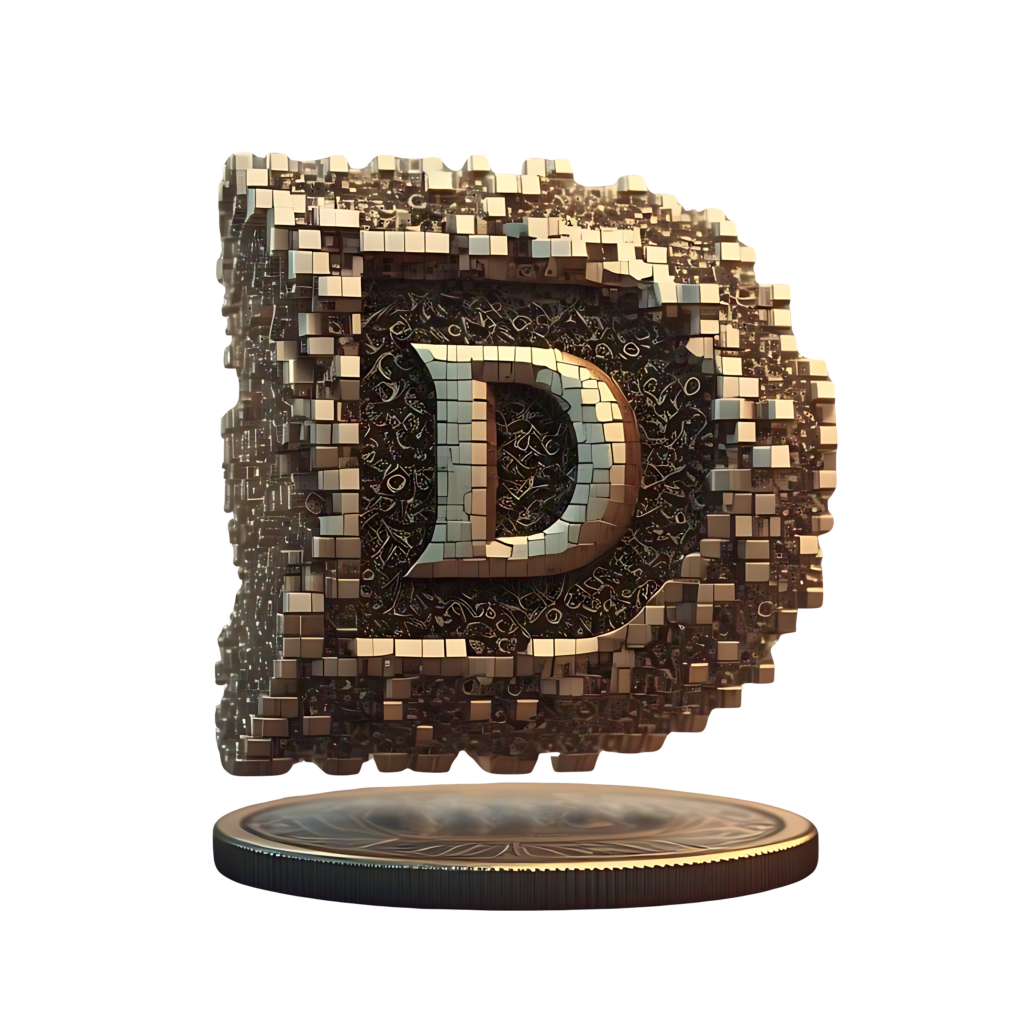In the simplest terms, cryptocurrency is digital money. Yep, just like the dollars in your wallet, cryptocurrencies are designed to be a medium of exchange. But here’s the catch—they aren’t physical coins or bills. Instead, they exist purely in a digital form. You can’t touch them, but you can send, receive, and even buy stuff with them. They’re like email, but for money!
Think of cryptocurrency as an alternative to traditional money (like cash or credit cards). The biggest difference is that it doesn’t rely on banks or other financial institutions to verify transactions. Instead, it uses technology—more on this in a bit—to securely manage and record transactions.
What Makes It So “Crypto”?
The “crypto” part of cryptocurrency comes from the word cryptography, which is just a fancy term for secure communication. Cryptocurrencies are built on a form of technology that encrypts and verifies the transfer of data. This makes them super secure and nearly impossible to tamper with. Imagine trying to mess with a vault that has layers upon layers of locks—it’s pretty much that secure!
If there’s no bank or government involved, you might wonder: who’s in charge of cryptocurrency? The answer is no one. And also, everyone. Unlike traditional currencies, cryptocurrencies are decentralized. This means no single person or organization holds the reins. Instead, transactions are managed by a network of computers all around the world.
Think of it like this: Imagine a giant virtual ledger that everyone has a copy of. Every time someone makes a transaction, it gets recorded in everyone’s ledger at the same time. This shared ledger is called a blockchain, and it ensures that no one can sneak in and fiddle with the numbers. Cool, right?
Why Should You Care?
You might be asking yourself, “Okay, this sounds neat, but why does it matter to me?” Great question! Cryptocurrencies are changing how we think about money. Here are a few reasons they’re worth knowing about:
- Global Access: Cryptocurrencies aren’t tied to any country or bank. You can send money to someone halfway across the world in minutes—no middlemen, no crazy fees.
- Control: You’re in charge of your own money. No need to go through a bank or service that might impose restrictions.
- Technology for the Future: The underlying tech behind cryptocurrencies—blockchain—has endless possibilities beyond just money, from secure voting systems to digital identities.
How can you buy crypto securely: Read more
How Digital Coins Come to Life: Understanding Mining and Validation
Ever wondered how cryptocurrencies like Bitcoin and Ethereum actually come into existence? Great question! Let’s break it down into simple, bite-sized chunks so you can finally understand what all the hype is about. Spoiler alert: there’s no magic involved—just some seriously smart technology.
What Is Mining?
You’ve probably heard the term “mining” thrown around in the world of cryptocurrency. No, it doesn’t mean people are digging up digital treasures from a virtual cave. In this sense, mining is the process through which new coins are created and added to circulation. Think of it as the “manufacturing” phase in the lifecycle of a digital currency.
Cryptocurrencies operate on a decentralized network called blockchain, which acts like a digital ledger keeping track of all transactions. Miners are specialized computers (and the people running them) that perform complex mathematical calculations to solve cryptographic puzzles. These puzzles may seem mind-bending, but solving them confirms the legitimacy of transactions and ensures security on the blockchain. As a reward for their efforts, miners occasionally receive newly minted coins.
Why Is Mining Necessary?
Mining isn’t just about creating new coins—it’s also a cornerstone of the blockchain’s security system. Whenever you buy or sell cryptocurrency, your transaction is bundled with others into a “block.” Miners validate these blocks by solving those tricky mathematical problems mentioned earlier. Once a block is verified, it’s added to the blockchain, and the whole network agrees it’s legit. No centralized authority, like a bank, is needed—just math and the power of many computers worldwide.
What About Validation in Proof-of-Stake?
Mining isn’t the only game in town. Some cryptocurrencies use a process called Proof-of-Stake (PoS) instead of mining. Here’s how it works:
- Instead of solving puzzles, “validators” are chosen to confirm transactions based on the number of coins they hold and are willing to lock up as collateral (this is called staking).
- Validators earn rewards for their work, usually in the form of small transaction fees.
- PoS is seen as more environmentally friendly since it doesn’t rely on power-hungry computing hardware.
Ethereum, for instance, recently transitioned to a Proof-of-Stake system to save energy and make its platform more sustainable. This approach is quickly gaining ground in the crypto world as a viable alternative to traditional mining.
Is It Really Worth the Energy?
You’ve probably heard the criticism that crypto mining uses a lot of electricity—and it’s true. The computational power required for Proof-of-Work mining can be massive, which is why several blockchains, like Ethereum, are moving towards eco-friendlier models like Proof-of-Stake. While mining ensures network security and keeps things running without a central authority, it’s important to weigh the environmental costs of this technology. If you’re an eco-conscious investor, focusing on coins with greener validation methods might be the way to go.
What Does This Mean for You?
Understanding mining and validation is key to grasping how cryptocurrencies work. Whether it’s computational giants solving puzzles or validators staking their coins to maintain the blockchain, these processes are the backbone of cryptocurrency’s existence. So, the next time someone mentions mining, picture a global army of computers racing to solve equations—not someone with a pickaxe in a digital cave!
More Than Bitcoin: A Look at Other Key Players in the Market
When most people hear the word “cryptocurrency,” their minds instantly jump to Bitcoin. And that’s fair—it’s the first, most famous, and highest-valued cryptocurrency out there. But if you zoom out and take a closer look at the market, you’ll find a fascinating ecosystem with a variety of digital currencies, each with unique features and purposes.
Let’s take some time to explore other key players in this growing space. If you’re curious about diving deeper into crypto, these names are worth knowing!
1. Ethereum: Beyond Coins, Into Smart Contracts
First up is Ethereum, the second-largest cryptocurrency by market capitalization. But Ethereum is so much more than just a digital currency (its coin is called Ether, or ETH). It’s an entire platform for decentralized applications (commonly called “dApps”).
The magic of Ethereum lies in its ability to execute smart contracts. Imagine a contract that automatically fulfills itself when certain conditions are met, with no third-party interference. For instance, you could set up an insurance claim or handle royalty payments digitally through Ethereum’s blockchain. This flexibility has made Ethereum the go-to platform for developers, powering projects like decentralized finance (DeFi) apps and NFTs (non-fungible tokens).
2. Binance Coin (BNB): The Exchange Powerhouse
Next up, there’s Binance Coin (BNB), the native cryptocurrency of the Binance exchange. Binance is one of the largest cryptocurrency exchanges in the world, and BNB plays a big role within its ecosystem.
Originally designed to offer discounts for trading on the Binance platform, BNB has since evolved to support a wide variety of uses. Whether it’s participating in token sales, paying transaction fees, or even booking travel, BNB has become a versatile player. It’s one to watch if you’re interested in the intersection of exchanges and digital currencies.
3. Cardano (ADA): Pioneering Sustainability
If you’re keen on environmentally-friendly options, Cardano (ADA) might catch your eye. Unlike energy-intensive proof-of-work systems like Bitcoin’s, Cardano uses a proof-of-stake consensus that drastically reduces energy consumption.
Cardano also emphasizes academic research. Its development is based on a peer-reviewed process, meaning scientists and blockchain experts vet its updates before implementation. This deliberate approach makes Cardano an increasingly popular option in everything from DeFi to supply chain tracking.
4. Ripple (XRP): Revolutionizing Global Payments
Ripple (XRP) focuses on one thing: making payments faster and cheaper. Unlike traditional bank transfers that can take days, Ripple enables cross-border payments in just seconds.
Ripple has partnered with major financial institutions like Santander and American Express, proving that cryptocurrencies can work seamlessly alongside existing financial systems. XRP, its currency, plays a vital role in supporting these transactions.
5. Solana (SOL): Speed Meets Scalability
If you’re into speed, Solana (SOL) might be the one for you. Known as one of the fastest blockchain platforms, Solana can handle thousands of transactions per second with minimal fees. This scalability has made it a popular choice for decentralized applications, particularly in gaming and NFTs.
Why Knowing More Than Bitcoin Matters
Bitcoin may have been the first, but these other cryptocurrencies bring exciting innovations to the table. Whether it’s smart contracts, eco-consciousness, global payment solutions, or ultra-speedy systems, each one offers something unique to the market. Learning about them can open your eyes to the wide-ranging potential of blockchain technology.
Why It Matters: Real-Life Uses of Digital Currencies Today
Cryptocurrency isn’t just a buzzword—it’s becoming a real game-changer in how we think about money and transactions. While the technology behind it might seem intimidating, its applications are surprisingly practical and impactful in today’s world. Let’s explore some of the ways digital currencies are being used in everyday life, breaking it down to show you why this innovation really matters.
Breaking Boundaries with Payments
Perhaps the most obvious use of cryptocurrency is as a digital payment method. Whether you’re buying coffee, paying for online subscriptions, or even purchasing a car, many businesses are adopting cryptocurrency as a way to do business faster and with fewer headaches. Bitcoin, for instance, has been accepted by companies like Microsoft and Overstock, while others like Shopify allow merchants to accept crypto payments through platforms like Coinbase Commerce.
Unlike traditional payment methods, crypto transactions often eliminate the need for intermediaries, such as banks, which can cut down on processing fees and waiting times. For global transactions, this is a huge advantage, especially in regions where the banking infrastructure is underdeveloped or expensive to use.
Sending Money Across Borders
Imagine sending money to a friend or family member halfway across the world and not having to deal with expensive remittance fees or long waits. That’s exactly what cryptocurrencies like Ripple (XRP) and Stellar (XLM) are designed to do. Traditional money transfer services often charge steep rates for international transfers. Cryptocurrencies flip the script by enabling quick and cost-effective cross-border transfers.
For example, an international wire transfer can take 2-7 business days to process, with fees eating into the amount sent. Cryptocurrencies can complete similar transactions in minutes for just a fraction of the cost.
Empowering People Without Access to Banking
Did you know that over 1.4 billion adults worldwide don’t have access to a traditional bank account? Cryptocurrencies are bridging this gap by allowing those who are “unbanked” or “underbanked” to store, send, and receive money securely—just with a smartphone. Platforms like Bitcoin or Ethereum provide decentralized financial services that don’t rely on traditional institutions.
For instance, a farmer in a rural area without a nearby bank can use their phone to access cryptocurrency for purchasing supplies or selling goods. This inclusion is revolutionary and could drastically improve economic opportunities in poorer regions.
Tokenizing Real World Assets
Cryptocurrencies are also being used to represent ownership of physical or digital assets. This process, called tokenization, is opening up new doors for everything from real estate to art investments. With platforms like Ethereum enabling the creation of these digital tokens, people can own shares of high-value assets without needing enormous amounts of capital upfront.
For instance, a property could be tokenized, meaning you could buy and own a fraction of it without purchasing the entire building. This makes investing more accessible and introduces liquidity to traditionally illiquid markets.
Rewarding Communities
Another exciting use of crypto is in community-driven or rewards-based ecosystems. Think of it as digital points or tokens that communities or platforms use to reward behaviors deemed valuable. Cryptocurrency is used this way in play-to-earn video games, like Axie Infinity, where players can earn digital assets just by playing, or in decentralized social networks, where content creators are rewarded in crypto.
Wallets and Safety: Keeping Your Virtual Assets Secure
So, you’ve decided to dive into the world of cryptocurrency. Welcome to the digital frontier! While the promise of innovation, decentralization, and financial freedom is exciting, there’s one important thing to keep in mind before you fully embark on your journey—safety. Just like you wouldn’t leave your physical wallet lying on a park bench, your crypto assets need proper protection too. Let’s walk through the essentials to help you keep your virtual assets secure and give you peace of mind.
The Basics: What Are Crypto Wallets?
If you’re new to crypto, the term “wallet” may sound pretty straightforward, but there’s a twist. A cryptocurrency wallet isn’t a physical object; instead, it’s a digital tool that stores your private keys. These keys are basically your access codes to the digital coins you own. Without them, your coins can’t be retrieved—ever. Wallets come in various forms, and knowing which type suits you best is key to securing your crypto assets.
Types of Cryptocurrency Wallets
- Hot Wallets: These are connected to the internet and are perfect for frequent trading or transactions. Examples include mobile apps, desktop wallets, and exchange-based wallets. While they’re convenient, they’re also more vulnerable to hacking due to their online nature.
- Cold Wallets: For the security-focused, cold wallets are the way to go. These are offline wallets, such as hardware wallets or paper wallets, which store your private keys away from the internet. Hackers can’t touch what they can’t access, making this the safest option for long-term storage.
In short, if you’re an everyday trader, a hot wallet might be your go-to. But if you’re planning to hold onto your investments for years, consider going cold.
Staying Safe: Best Practices for Secure Crypto Storage
To help you avoid common pitfalls, here are some tried-and-true tips to safeguard your digital coins:
- Enable Two-Factor Authentication (2FA): Whether it’s your wallet app or exchange account, always enable 2FA. This adds an extra layer of protection by requiring you to verify your identity through a second device each time you log in.
- Don’t Share Your Private Key: Think of your private key as the master key to your crypto savings. Share it with no one—not even the friendliest support agent claiming to help you unlock an account.
- Keep a Backup: Store backups of your wallet in a secure physical location, like a safe or a safety deposit box. Many people jot down their keys or recovery phrases on paper for this purpose.
- Beware of Phishing Scams: Scammers often pose as legitimate companies or individuals to trick you into revealing sensitive information. Always double-check URLs and email addresses before clicking on anything.
- Update Regularly: Whether using a hardware wallet or a software app, keep your tools and devices updated with the latest security patches.
Hardware Wallets: A Solid Shield
If there’s one tip seasoned crypto investors swear by, it’s getting a hardware wallet. Devices such as Ledger and Trezor allow you to keep your private keys on an encrypted, offline device. It’s like having a vault in your pocket that hackers can’t penetrate. Yes, there’s an upfront cost, but think of it as an investment in your peace of mind.
Real-Life Examples of Security Gone Wrong
History is peppered with cautionary tales from those who didn’t take wallet security seriously. Take the infamous example of Mt. Gox, where 850,000 Bitcoins were lost due to poor security measures, or the unfortunate individuals who’ve lost fortunes by misplacing private keys or recovery phrases. Don’t let these stories scare you—let them motivate you to be proactive about protecting your investments.
Common Myths That Keep People Confused or Hesitant
Cryptocurrency is fascinating, isn’t it? It’s been making headlines for years now. But despite its growing popularity, many people still hesitate to dip their toes into the crypto waters. Why? Myths and misconceptions! Let’s clear the air and break down some of the most common myths that might be holding you back. Who knows? By the time you finish reading, you might even consider becoming a crypto enthusiast!
Myth 1: Cryptocurrency Is Only Used for Illegal Activities
This belief likely stems from the early days of Bitcoin when it was associated with dark web marketplaces. Yes, cryptocurrency has been misused by bad actors (just like cash, by the way), but its broader uses greatly outshine its shadowy origins. Today, companies like Tesla, Microsoft, and even local coffee shops accept crypto as a legitimate form of payment. Governments are also exploring its potential for mainstream financial systems. So no, owning Bitcoin doesn’t mean you’re part of a heist movie!
Myth 2: Cryptocurrencies Have No Real Value
Many skeptics argue that cryptocurrencies have no “intrinsic value.” Here’s the thing: value is often driven by utility and trust. While it’s true that Bitcoin isn’t backed by gold or government fiat, it does provide real-world solutions, like transferring money across borders within minutes. Additionally, cryptocurrencies often support powerful applications, such as smart contracts that eliminate the need for middlemen. The value lies in the technology, adoption, and problem-solving capability they bring to the table.
Myth 3: It’s Too Late to Invest in Cryptocurrency
“The Bitcoin ship has already sailed” is a statement you hear all too often. While it’s true that Bitcoin’s price increased dramatically over the years, the crypto ecosystem itself has continuously evolved with new opportunities. Altcoins (alternative cryptocurrencies) and emerging technologies like NFTs (Non-Fungible Tokens) provide plenty of potential for innovation and investment. Also, with the advent of fractional investing, you don’t have to buy an entire Bitcoin; even as little as $10 can get you a slice of the pie!












